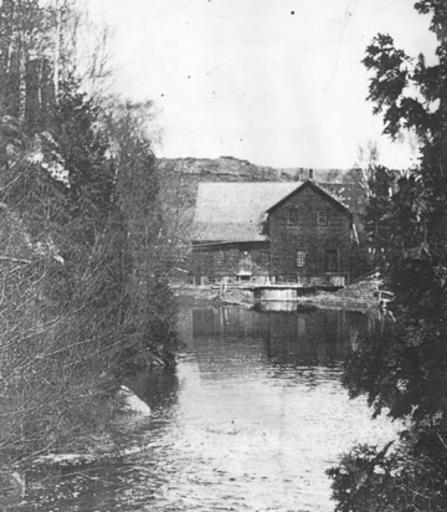MAKE A MEME
View Large Image

| View Original: | Denbigh_Grist_Mill.jpg (360x412) | |||
| Download: | Original | Medium | Small | Thumb |
| Courtesy of: | www.flickr.com | More Like This | ||
| Keywords: denbigh gristmill grist mill denbeigh addington highlands addingtonhighlands lennox & addington lennoxaddington blackandwhite monochrome outdoor black and white In pioneer days the people who settled in Denbigh found that anything they could not make themselves or access locally was basically out of reach, unless they were able to travel for several days over rough terrain to Renfrew, or to the south on the Addington Road. This led to a spirit of self-sufficiency, and at the turn of the 20th century there were a number of blacksmiths, a very busy grist mill, hotels, two churches and two stores in Denbigh to serve the population. A description of life in Denbigh in 1900 that was reprinted in the Oxen and the Axe illustrates what life and travel were like back then: “They used to gather all the produce that could be spared in the fall and drive to Renfrew to trade. They had butter in 90 pound firkins or in prints, potatoes, grain, beef, pigs, geese and wool in fleece and spun into yarn. The journey took three days down and back They traded their produce for sugar, flour, and meal by the hundred pound bag to do them a year.” Until 1903, Denbigh had a lot of competition as a centre from the village of Vennachar, which is located only a few kilometres away, but a massive fire decimated Vennachar, and Denbigh has been a larger centre ever since. Not that Denbigh is large; it has 176 year-round households along with many seasonal residences on Denbigh, Ashby, and other smaller lakes. But the community is tightly knit, and community events are often better attended than those in communities ten times as large. Source of Information: Jeff Green, Editor- Frontenac News- Sharbot Lake Ontario, written by Margaret Axford- Cloyne and District Historical Society (CDHS) Photo source: Oxen and the Axe - a book commissioned by the CDHS. Date of photo unknown. In pioneer days the people who settled in Denbigh found that anything they could not make themselves or access locally was basically out of reach, unless they were able to travel for several days over rough terrain to Renfrew, or to the south on the Addington Road. This led to a spirit of self-sufficiency, and at the turn of the 20th century there were a number of blacksmiths, a very busy grist mill, hotels, two churches and two stores in Denbigh to serve the population. A description of life in Denbigh in 1900 that was reprinted in the Oxen and the Axe illustrates what life and travel were like back then: “They used to gather all the produce that could be spared in the fall and drive to Renfrew to trade. They had butter in 90 pound firkins or in prints, potatoes, grain, beef, pigs, geese and wool in fleece and spun into yarn. The journey took three days down and back They traded their produce for sugar, flour, and meal by the hundred pound bag to do them a year.” Until 1903, Denbigh had a lot of competition as a centre from the village of Vennachar, which is located only a few kilometres away, but a massive fire decimated Vennachar, and Denbigh has been a larger centre ever since. Not that Denbigh is large; it has 176 year-round households along with many seasonal residences on Denbigh, Ashby, and other smaller lakes. But the community is tightly knit, and community events are often better attended than those in communities ten times as large. Source of Information: Jeff Green, Editor- Frontenac News- Sharbot Lake Ontario, written by Margaret Axford- Cloyne and District Historical Society (CDHS) Photo source: Oxen and the Axe - a book commissioned by the CDHS. Date of photo unknown. | ||||